US retail sales rose 1.0% mom to USD 680.6B in June, above expectation of 0.8% mom. Ex-auto sales rose 1.0% mom, above expectation of 0.6% mom. Ex-gasoline sales rose 0.7% mom. Ex-auto, ex-gasoline sales rose 0.7% mom. Retail trade rose 1.0% mom. Gasoline sales rose 3.6% mom. Total sales for the three months through June were up 8.1% yoy.
Eurozone exports rose 28.9% yoy in May, imports rose 52% yoy
Eurozone exports of goods to the rest of the world rose 28.9% yoy to EUR 248.5B in May. Imports of goods rose 52.0% yoy to EUR 274.8B. Trade deficit came in at EUR -26.3B. Intra-eurozone trade rose 33.0% yoy to EUR 231.6B.
In seasonally adjusted term, exports rose 4.8% mom to EUR 241.8B. Imports rose 2.0% mom to EUR 267.8B. Trade deficit narrowed from April’s EUR -31.8B to EUR -26.0B, slightly smaller than expectation of EUR -26.3B. Intra-eurozone trade rose from EUR 217.2B to EUR 221.4B.
Gold breaches 1700, close to critical support
Gold’s down trend continued this week and breached 1700 handle overnight. Further fall is still in favor but Gold is now close to a critical support zone.
Whole pattern from 2074.84 (2020 high) is seen as a three wave consolidation pattern, with fall from 2070.06 as the third leg. Strong support is expected around 1682.60, with 38.2% retracement of 1046.27 to 2074.84 at 1681.92, to complete the pattern. Break of 1745.21 minor resistance will now be a sign of short term bottoming and bring stronger rise back to 1786.65/1878.92 resistance zone.
However, sustained break of 1682.60 will complete a double top reversal pattern (2074.84, 2070.06), and could prompt deeper decline to 61.8% retracement at 1439.18.
China GDP grew only 0.4% yoy in Q2, but Jun data improved
China GDP grew only 0.4% yoy in Q2, missing even the expectation of 1.0% yoy. For June, industrial production rose 3.9% yoy, below expectation of 4.3% yoy. Nevertheless, retail sales rose 3.1% yoy, above expectation of 0.4% yoy. Fixed asset investment rose 6.1% ytd yoy, versus expectation of 6.0%.
“Domestically, the impact of the epidemic is lingering,” NBS spokesman Fu Linghui said. “Economic growth is still much lower than its potential, as the fear of Covid outbreaks continues to hurt consumer and corporate sentiment… Even accounting for June’s strength, the data are consistent with negative year-on-year growth last quarter,” he added.
NZ BusinessNZ manufacturing dropped to 49.7, sector remains in struggle street
New Zealand BusinessNZ Performance of Manufacturing Index dropped from 52.9 to 49.7 in June. Production dropped from 52.6 to 47.8. Employment dropped from 52.8 to 51.2. New orders dropped fro 52.3 to 47.8. Finished stocks dropped from 52.8 to 50.0. Deliveries dropped from 55.1 to 51.7.
BusinessNZ’s Director, Advocacy Catherine Beard said that the drop in activity levels for June highlights the fact that the sector remains in struggle street to get back to long-term activity levels.
“The key sub index values of Production (47.8) and New Orders (47.8) both recorded the same level of contraction, which had a combined negative effect on the overall Index. As mentioned in previous months, a strong and consistent activity level for both these key sub index values will be the only way to push the PMI towards better results.”
Fed Bullard: 75bps has a lot of virtue to it
In an interview by Nikkei after US CPI release, St. Louis Fed President James Bullard said rate-setters have “framed” the July FOMC meeting as “50 versus 75”. “I think 75 has a lot of virtue to it, because the long run neutral that the committee has, according to the Summary of Economic Projections, is actually about 2.5%,” he said.
“If we made this move at this meeting, that would get us all the way till the long run neutral value. And obviously we’ve got more steps to take in meetings ahead, but we can assess as we go through the rest of this year,” he added.
While Bullard has been advocating to get interest rate to 3.5% this year, rate exceeding 4% by the end of this year is “possible”. “If data came in, continued to come in, in an adverse way, for the committee, then we could consider doing more, as we go through the fall here. So, I’d say it’s a possibility.”
Fed Waller supports larger than 75bps hike if retail sales and housing data materially stronger than expected
Fed Governor Christopher Waller said in a speech that as the base case, he supports another 75bps rate hike at the July 26-27 FOMC meeting. This level is “close to neutral”, neither stimulates nor restricts demand.
But Waller added, if upcoming retail sales and housing data “come in materially stronger than expected it would make me lean towards a larger hike at the July meeting to the extent it shows demand is not slowing down fast enough to get inflation down.”
After July, Waller expects “monetary policy to be restrictive until there has been a sustained reduction in core personal consumption expenditure (PCE) inflation, which excludes food and energy.” And, “until I see a significant moderation in core prices, I support further rate hikes,” he added.
EU downgrades 2022 Eurozone GDP forecasts to 2.6%, 2023 to 1.4%
In the Summer 2022 Economic Forecast, European Commission downgraded both 2022 and 2023 Eurozone GDP growth projections. Meanwhile, HICP inflation projections were upgraded for Eurozone in both years. .
Eurozone GDP growth forecasts:
- 2022 at 2.6% (downgraded from 2.7%).
- 2023 at 1.4% (downgraded from 2.3%).
Eurozone HICP inflation forecasts:
- 2022 at 7.6% (upgraded from 6.1%).
- 2023 at 4.0% (upgraded from 2.7%).
Valdis Dombrovskis, Executive Vice-President said: “Russia’s war against Ukraine continues to cast a long shadow over Europe and our economy. We are facing challenges on multiple fronts from rising energy and food prices to a highly uncertain global outlook.”
Paolo Gentiloni, Commissioner for Economy said: “Russia’s unprovoked invasion of Ukraine continues to send shockwaves through the global economy. Moscow’s actions are disrupting energy and grain supplies, pushing up prices and weakening confidence…
“In Europe, momentum from the reopening of our economies is set to prop up annual growth in 2022, but for 2023 we have markedly revised down our forecast. Record-high inflation is now expected to peak later this year and gradually decline in 2023…
“With the course of the war and the reliability of gas supplies unknown, this forecast is subject to high uncertainty and downside risks. To navigate these troubled waters, Europe must show leadership, with three words defining our policies: solidarity, sustainability and security.”
US PPI rose 1.1% mom in July, 12-mnth rate at record 11.6% yoy
US PPI for final demand rose 1.1% mom in July, above expectation of 0.8% mom. For the 12-month period, PPI accelerated to a record 11.6% yoy, above expectation of 10.% yoy. PPI less foods, energy, and trade services rose 0.3% mom, 6.4% yoy.
US initial jobless claims rose to 244k, slightly above expectations
US initial jobless claims rose 9k to 244k in the week ending July 9, above expectation of 240k. Four-week moving average rose 3k to 236k.
Continuing claims dropped -41k to 1331k in the week ending July2. Four-week moving average of continuing claims rose 5k to 1340k.
Australia unemployment rate dropped to 3.5%, lowest since 1974
Australia employment grew 88.4k in June, above expectation of 30.0k. Full time jobs grew 52.9k while part-time jobs rose 35.5k. Unemployment rate dropped sharply from 3.9% to 3.5%, below expectation of 3.8%. That’s the lowest level since August 1974. Participation rate rose from 66.7% to 66.8%. Monthly hours worked was essentially unchanged at 1856m.
Bjorn Jarvis, head of labour statistics at the ABS, said: “The 3.4 per cent unemployment rate for women was the lowest since February 1974 and the 3.6 per cent rate for men was the lowest since May 1976.”
“The large fall in the unemployment rate this month reflects more people than usual entering employment and also lower than usual numbers of employed people becoming unemployed. Together these flows reflect an increasingly tight labour market, with high demand for engaging and retaining workers, as well as ongoing labour shortages.”
Fed Mester: No reason to have a smaller hike than 75bps
Cleveland President Loretta Mester told Bloomberg TV yesterday, the June inflation report was “uniformly bad”. “There was no good news in that report at all,” she said. “We at the Fed have to be very deliberate and intentional about continuing on this path of raising our interest rate until we get and see convincing evidence that inflation has turned a corner.”
“Certainly the inflation report suggests that there’s no reason to say that a smaller rate increase than we did last time, right, because nothing moved in that direction,” she added.
Asked if a 100bps hike is appropriate this month, Mester said, “We’re going to have the meeting and we’re going to talk about what the appropriate path of policy is. We don’t have to make a decision today.”
Fed Bostic: Inflation trajectory not moving in positive way
Commenting on yesterday’s US CPI report, which showed headline inflation surged to 9.1%, Atlanta Fed President Raphael Bostic said the “numbers suggest the trajectory is not moving in a positive way”. But, “how much I need to adapt is really the next question,” as he needed to study the “nuts and bolts” of the report.
“The top-line number is a source of concern,” Bostic said, “Everything is in play.” Asked if that included by raising rates by a full percentage point, following BoC’s surprised move, he replied, “it would mean everything.”
BoC hikes 100bps to 2.5%, maintains hawkish bias
BoC raises overnight rate target by 100bps to 2.50% today, even larger than expectation of 75bps. The Bank Rate and deposit rate are now at 2.75% and 2.50% respectively. BoC will also continuing its policy of quantitative tightening.
The central bank also maintains hawkish bias, and said, “the Governing Council continues to judge that interest rates will need to rise further, and the pace of increases will be guided by the Bank’s ongoing assessment of the economy and inflation”
On the economy, BoC estimated that GDP grew by about 4% in Q2, and will slow to about 2% in Q3. The economy is projected to grow by 3.50% in 2022, 1.75% in 2023, and then 2.50% in 2024. Inflation is projected to slow to about 3% by then end of next year, and then returns to 2% target by the end of 2024.
US CPI accelerated again to 9.1% yoy in Jun, energy up 41.6% yoy, food up 10.4% yoy
US CPI rose 1.3% mom in June, above expectation of 1.0% mom. CPI core rose 0.7% mom, also above expectation of 0.5% mom. Energy index rose 7.5% mom, contributed nearly half of the all items increase. Gasoline index rose 11.2% mom. Food index rose 1.0% mom.
For the 12-month period, CPI accelerated from 8.6% yoy to 9.1% yoy, above expectation of 8.7% yoy. That’s the highest level since November 1981. CPI core (all items less food and energy) slowed slightly from 6.0% yoy to 5.9% yoy, above expectation of 5.7% yoy. Energy index rose 41.6% yoy, highest since April 1980. Food index rose 10.4% yoy, highest since February 1981.
NIESR forecasts 0.2% growth in UK GDP in Q2
After data showing 0.5% mom GDP growth in UK, NIESR now forecasts 0.2% mom growth in June. For whole of Q2, growth would then be 0.2%. It still forecast a contraction of -0.1% in GDP Q3, with growth likely to slow further as inflation drags on consumer demand.
Rory Macqueen, Principal Economist, NIESR:
“If April activity was more encouraging than the headline figure suggested – with strong consumer-facing services dragged down by the reduction in vaccinations – the opposite may be true of May. Headline growth of 0.5 per cent owed much to rising GP visits, while sectors like hospitality, retail and the arts all contracted, suggesting that rising prices may have eaten into discretionary household consumption.
” More encouragingly, manufacturing had its joint strongest month since November 2020, and construction recorded a seventh consecutive month of expansion. With plenty of room for revisions, it looks like touch and go as to whether the UK economy entered recession in the second quarter.”
Eurozone industrial production rose 0.8%, mom in May, EU up 0.6% mom
Eurozone industrial production rose 0.8% mom in May, well above expectation of 0.2% mom. Production of non-durable consumer goods rose by 2.7%, capital goods by 2.5% and durable consumer goods by 1.4%, while production of intermediate goods remained unchanged and production of energy fell by -3.3%.
EU industrial production rose 0.6% mom. Among Member States for which data are available, the highest monthly increases were registered in Ireland (+13.9%), Greece (+2.6%) and Czechia (+2.4%). The largest decreases were observed in Lithuania (-7.6%), the Netherlands (-3.3%) and Luxembourg (-2.9%).
UK GDP grew 0.5% mom in May, much better than expectations
UK GDP grew 0.5% mom in May, much better than expectation of 0.0%. Services rose 0.4% mom. Production rose 0.9% mom. Construction also rose 1.5% mom. Monthly GDP is estimated to be 1.7% above its pre-pandemic levels in February 2020. In the three months to May, GDP grew 0.4%. Annual growth in monthly GDP was 3.5% yoy.
Also published, industrial production was up 0.9% mom, 1.4% yoy, versus expectation of 0.0% mom, 1.7% yoy. Manufacturing production was up 1.4% mom, 2.3% yoy, versus expectation of 0.1% mom, 0.3% yoy. Goods trade deficit was little changed at GBP -21.4B, versus expectation of GBP -18.3B.
RBNZ lifts OCR by 50bps to 2.5%, maintains approach of brisk rate hikes
RBNZ raised Official Cash Rate by 50bps to 2.50% as widely expected. The central bank also indicated that it will follow the projected path to raise interest to nearing 3.5% by the end of 2022, and then around 4% in mid-2023.
“The Committee is comfortable that the projected path of the OCR outlined in the recent May Monetary Policy Statement remains broadly consistent with achieving its primary inflation and employment objectives – without causing unnecessary instability in output, interest rates and the exchange rate,” RBNZ said in the statement.
Also, as noted in the summary records of meeting, “The Committee agreed to maintain its approach of briskly lifting the OCR until it is confident that monetary conditions are sufficient to constrain inflation expectations and bring consumer price inflation to within the target range.”




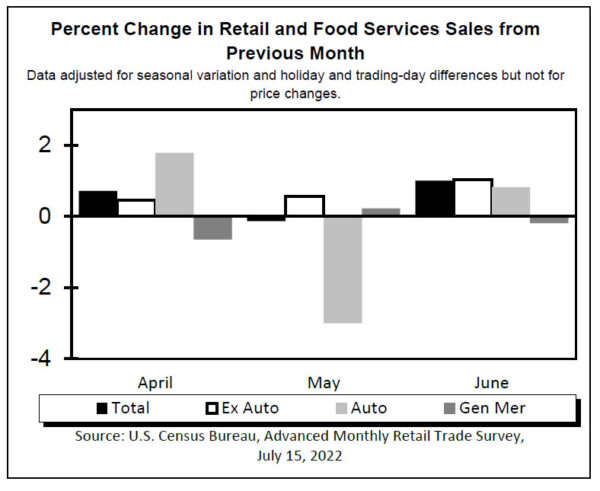
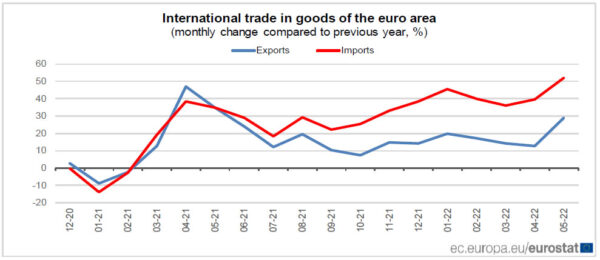
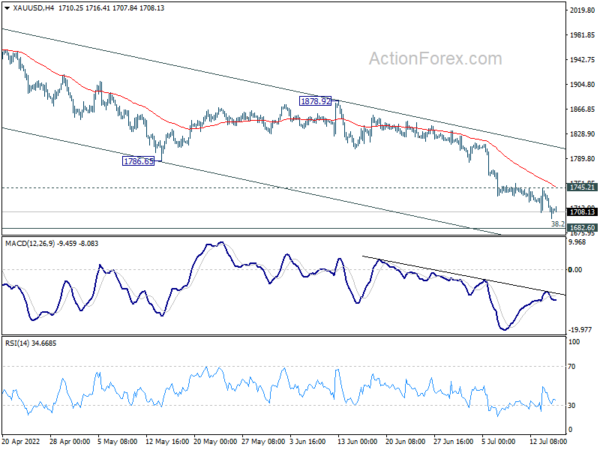
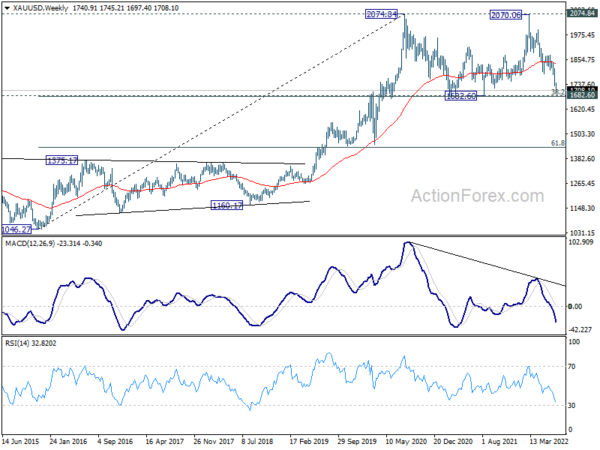
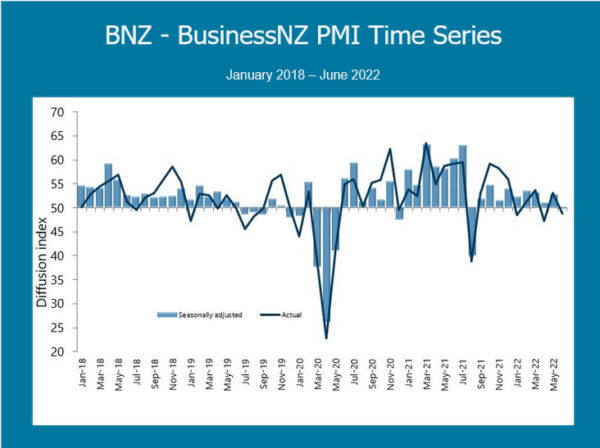
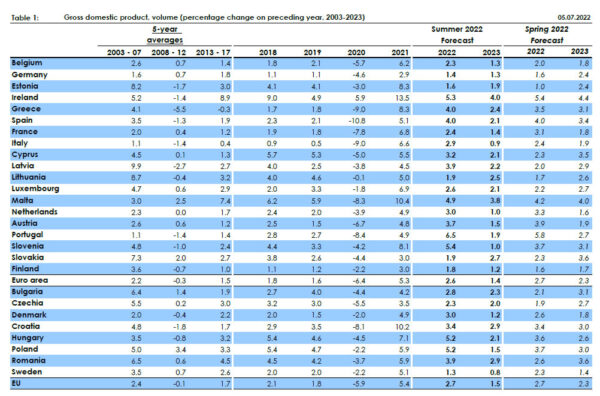
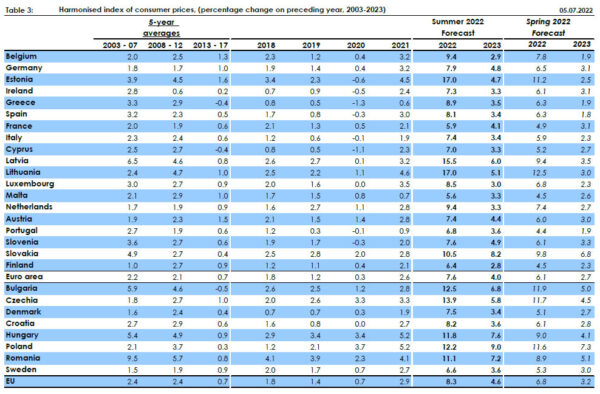
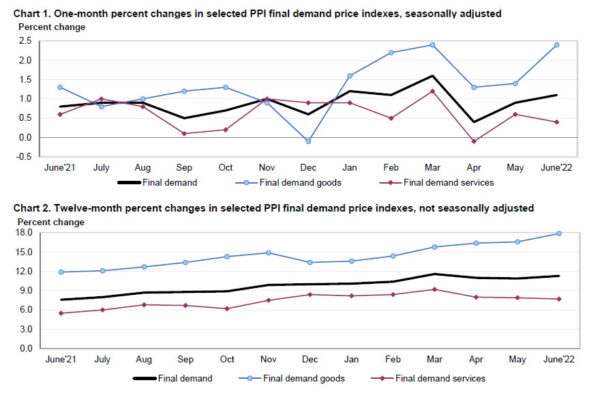
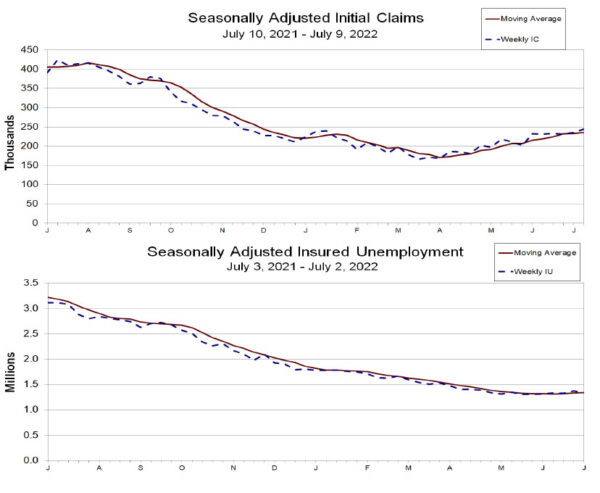
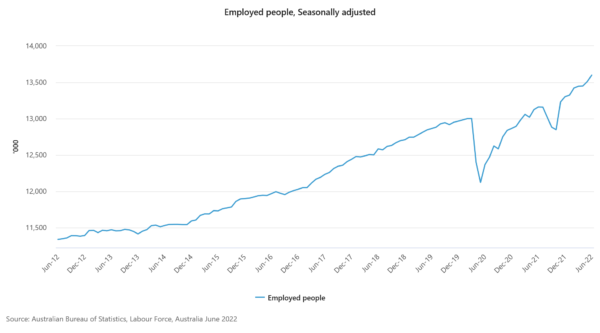
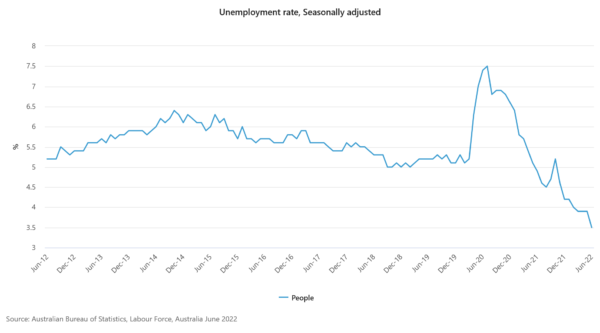
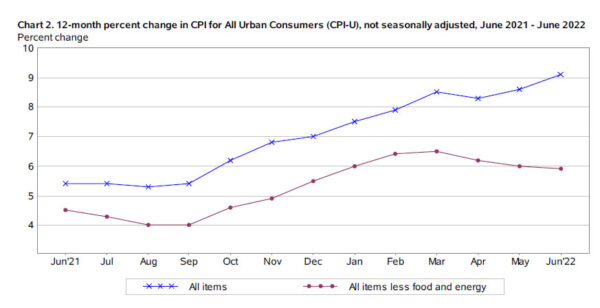
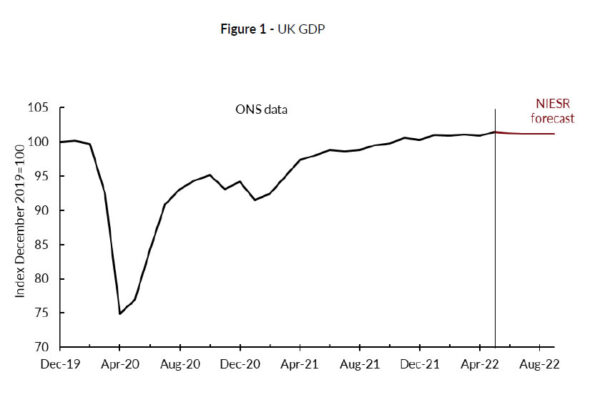
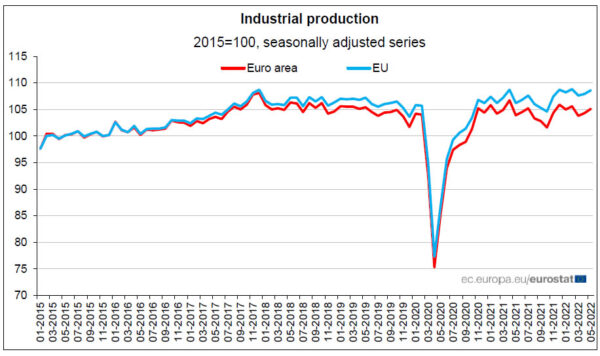
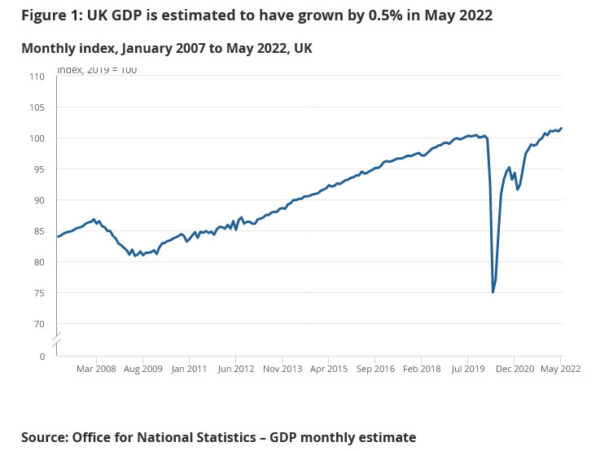

New Zealand BusinessNZ services rose slightly to 55.4, sustained improvement
New Zealand BusinessNZ Performance of Services Index ticked up from 55.3 to 55.4 in June, staying above long term average of 53.6 or the survey. Activity/sales dropped from 59.4 to 56.5. But employment improved notably from 49.0 to 53.1. New orders/business rose from 62.0 to 61.7. Stocks/inventories dropped from 54.7 to 54.1. Supplier deliveries rose from 45.6 to 47.8.
BNZ Senior Economist Craig Ebert said that “the move to traffic light Orange in mid-April, along with the expedited opening of the border, is clearly providing a basis for sustained improvement in New Zealand’s services sector”.
Full release here.